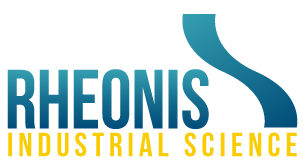What can a rheometer do for industrial questions?
The rheometer is generally known as the device for measuring rheological properties. Most business models allow to determine the evolutions of the viscosity depending on the shear (flow curve or rheogram, thixotropy) as well as the viscoelastic properties.
It is often less known that this instrumentation makes it possible to quantify many other behavioral properties of materials and complex products (texture, phase changes, degradation, sliding, spinning, sticky, etc.), even to mimic, reproduce, experimentally simulate processes or applications.
The rheometer among behavioral instrumental techniques
We classify the rheometer in the category of behavioral instrumental techniques, imposing thermomechanical constraints on the product to be tested in order to measure its responses.
The rheometer offers the possibility, depending on the model, of imposing rotational shear stresses (in large or small deformations), traction/compression (in large deformations by default, in small deformations thanks to DMA-type modules), bending or torsion (by means of adapted geometries).
Thus, it is possible thanks to this machine to impose on a sample the different types of mechanical stresses possible in nature. This asset is major when it comes to "miming" the phenomena appearing in industrial processes and applications.
5 types of rheometry: conventional, advanced, exotic rheometry, coupled measurement and instrumented micro-pilot
It is often difficult to distinguish the uses of sophisticated and highly configurable instrumentation. Also, we propose to identify 5 types of modes of use of the rheometer.
Advanced rheometry
We designate by advanced rheometry the use of conventional rheometry in more applied approaches, taking into account the practical conditions of implementation of the materials to mimic by instrumental protocols adapted to the real constraints.
Indeed, the constraints of the processes as of the applications do not systematically imply equilibrium regimes, but on the contrary transient regimes which it is a question of knowing, at least in their main characteristics if not in their amplitude, to quantify responses representative of the material.
Otherwise, the most scientifically robust measurements may fail to show robust correlations with real phenomena. This is a quite common bias, even in the scientific literature.
Exotic Rheometry
La exotic rheometry aims to qualify a mode of use of the rheometer exploiting the variety of its modes of application of stresses to quantify responses which, unlike the parameters measured in conventional rheometry, are not systematically based on theoretical concepts. We are talking about operational parameters, essentially defined by the robustness of the instrumental protocol that quantifies them.
The different texture properties (hardness, adhesiveness, masticability, etc.) accessible by so-called TPA (Texture Profile Analysis) protocols are parameters of this type. The use of the rheometer as a texturometer often makes use of spindles making it possible to impose specific stress configurations. It is also possible to quantify the sliding of a gelled product, the stickiness of a product pasty or the surface tension of a complex fluid.
Here again, we can design more or less advanced practices depending on the nature and finesse of the real behaviors to be studied. In exotic rheometry, the protocols are often mimetic.
Rheometry in coupled measurement
The rheometer has the advantage of making it possible to impose various thermomechanical constraints on the substances under study. Common ways of using rheometry rely on the quantification of mechanical responses to extract various behavioral characteristics.
It is also possible to use the "open air" configuration of the rheometer to add various sensors (optics, hygrometry, pH, etc.) to monitor the evolution of various parameters in parallel with the mechanical parameters.
Instrumented micro-pilot on rheometer
Certain developments in instrumental techniques, not far from the issues of process engineering, have given rise to the systemic rheology, aimed at studying rheological behavior under conditions close to real conditions.
At Rheonis, it is the rheometer itself that we transform into micro driver. The use of various ad hoc experimental modules allows us to mimic the characteristic constraints of a process or an application and to monitor their effects in real time on the states of matter.
You wish to discuss with our team of specialists your instrumentation questions and their use
Last Updated on November 4, 2022 by Vincent Billot
